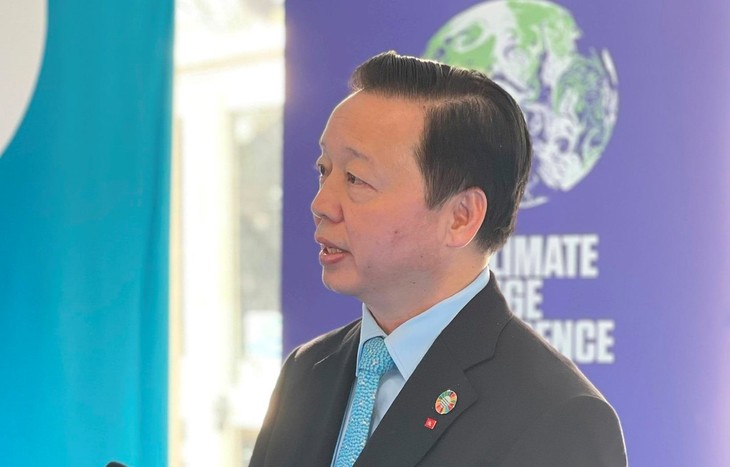(VOVWORLD) - Vietnam is one of the world’s 12 centers of biodiversity, with an abundance and diversity of rare, precious genetic resources. With the goal of conservation and sustainable development of natural resources to serve the strategies of socio-economic development and environmental protection, Vietnam has fine-tuned legislation on biodiversity and implemented multiple projects on biodiversity conservation throughout the country.
 Deputy Prime Minister Tran Hong Ha Deputy Prime Minister Tran Hong Ha |
Vietnam has established 173 nature reserves including national parks, biosphere reserves, species and habitat conservation centers, and landscape protection centers. Vietnam has 9 wetlands recognized as World Ramsar sites. 23 of 63 provinces and cities have approved biodiversity conservation plans.
Like many other countries, Vietnam is facing challenges in biodiversity conservation. It has implemented multiple measures to restore biodiversity, strengthened communication about the importance of the ecological environment, developed science and technology, harmonized economic development and sustainable environmental protection, and boosted the development of the green and circular economy.
Ms. Pham Minh Thao, Director of Biodiversity Conservation of the World Wildlife Fund in Vietnam, said: 'We need to review biodiversity values in Vietnam. When it comes to biodiversity, it involves not only the mainland but also the coastal area, the wetland area, and the sea area. Cooperation needs to be strengthened between private organizations, NGOs, the government, domestic and foreign organizations and the community.'
To realize the goals of the Kunming-Montreal Global Biodiversity Framework set at the Conference of the Parties to the Convention on Biological Diversity (COP15) in Denmark in 2009, Vietnam developed a biodiversity conservation plan sponsored by the Ministry of Natural Resources and Environment.
Under the plan, ensuring green economic development and proactively adapting to climate change play a key role in the implementation of the national strategy on biodiversity until 2030 and a vision to 2050. Vietnam aims to expand terrestrial nature reserves to nearly 3 million hectares and marine and coastal conservation zones to 3%-5% of the natural sea area in order to realize the country’s commitments at the 26th Conference of the Parties to the United Nations Framework Convention on Climate Change (COP26) and implement the national green growth strategy.
Deputy Prime Minister Tran Hong Ha said: 'This is a national plan but it must also reflect our responsibility as a party to the convention on biodiversity. We must set out vision and adapt the plan to the global situation.'
Vietnam has implemented several conservation action plans for endangered species including sea turtles, elephants, tigers, primates, and small carnivores as part of its effort to promote national sustainable development.